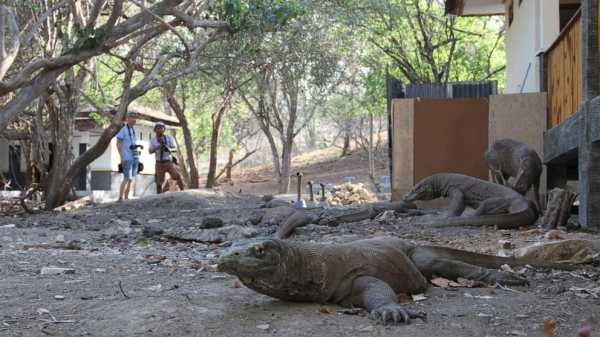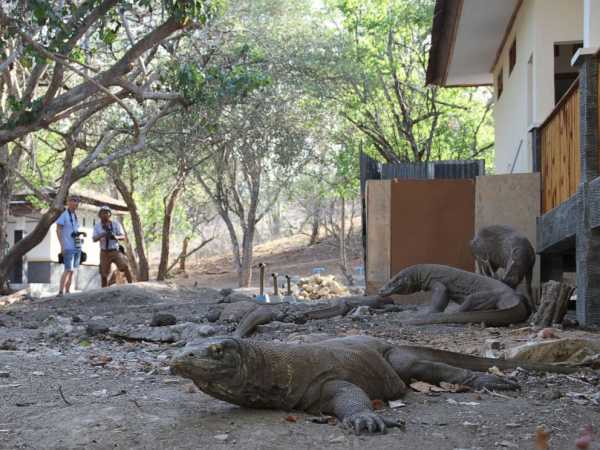
Shine said that Komodos and their closest cousins suffered from the same worldwide pattern of megafauna blinking out from areas once humans arrived. The only place the Komodo dragon persisted was the islands, where humans never lived in large numbers.
Expert flex
Komodo Island is quite dry and not a great place for humans to live, even if you forget the threat of being eaten by giant venomous dragons.
Somaweera said this is one of the reasons the dragons have likely endured in this small pocket of the world — the reptiles can survive in an area that large numbers of humans can’t.
“It’s largely uninhabitable land. Humans have no interest in that area,” he said, adding that the dragons went extinct in lusher, more human-friendly islands such as Borneo, and are only hanging on in small pockets of Flores.
(MORE: These sharks glow neon green — and now scientists know how)
The big lizards could handle a dry environment like Komodo Island because, like all reptiles, they are experts at boom and bust cycles. Being coldblooded, they have lower energy demands, and can survive on little sustenance for months at a time, and fossil evidence shows that the dragons were smaller during periods when there wasn’t as much large prey available.
Plus, the Komodos don’t seem to be picky about food, and can switch their diets to support their needs.

Ruchira Somaweera
Komodo Dragons who have been habituated to co-occur with humans.
“If nothing’s on land they can hunt in water,” Somaweera said, adding that their diets were likely supplemented by turtle eggs or dead sea creatures that occasionally washed up onshore.
Cannibalism and virgin births
While the lack of any concentrated population of humans has helped them persist, humans have also unwittingly helped the dragons through the millennia. Prey items that were never previously on the menu on the islands like pigs, buffalo and deer were all introduced to Komodo Island by humans 7,000 to 10,000 years ago.
This change, Shine said, likely moved the dragons back an ecological niche more similar to the one they actually evolved in but with different prey species.
(MORE: Crows enjoy getting food cleverly more than getting it easily)
But to top things off, Komodos also have a couple of secret weapons they can use in a pinch — a penchant for cannibalism and females’ ability to reproduce by parthenogenesis, or virgin birth, when there are no males around.
Somaweera and Shine’s review “is a very nice piece of work and a bit overdue,” said Bryan Fry, a biologist at Australia’s Queensland University who studies Komodo dragons but was not involved in the recent research. He also said that the lizards’ ability to swim between Komodo and other nearby islands has likely helped them boost genetic diversity and sustain populations in smaller islands.
Inside Science is an editorially-independent nonprofit print, electronic and video journalism news service owned and operated by the American Institute of Physics.

Inside Science
Sourse: abcnews.go.com






